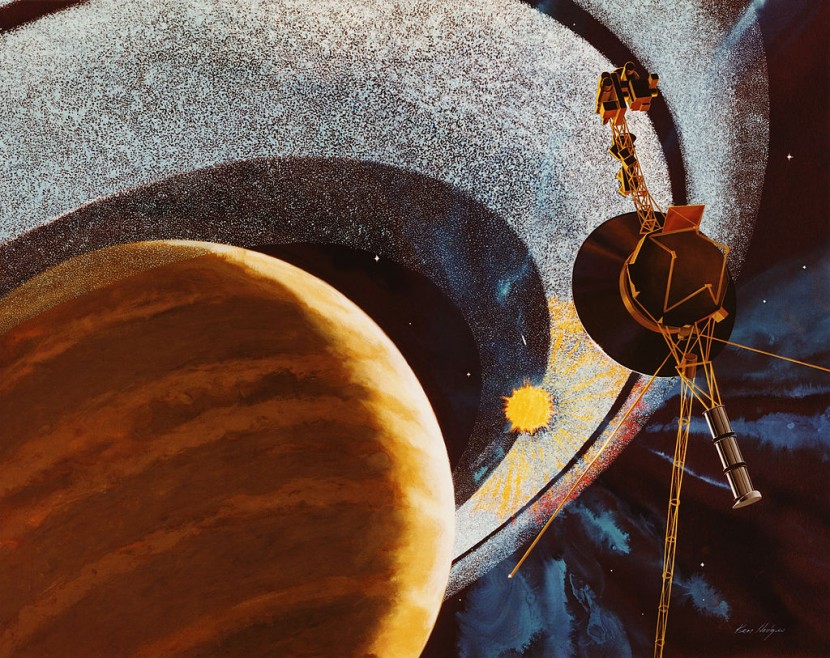When NASA launched its historical Voyager 1 spacecraft, the Space Union included gold vinyl. Now, experts claim that these music disks could outlive humans. Here's why.
Voyager 1's Gold Vinyl for Aliens Could Outlive Humans

According to The Guardian's latest report, the Voyager 1 took a photo of Earth in 1990 from a distance of four billion miles.
This image of the planet is called the "Pale Blue Dot." Carl Sagan, a popular American astronomer, described the image as "a mote of dust suspended in a sunbeam."
After this, the Voyager 1 glided through space and out of the solar system. As of writing, the NASA spacecraft is still gliding through space; The Sky Live estimated that the Voyager 1 is currently in the constellation of Ophiuchus.
While the Voyager 1 is gliding through space, it also carries the gold-plated vinyl LPs, which contain recordings of Bach, Chuck Berry, and Beethoven.
Aside from these, they also contain greetings of humans in 55 languages. Experts said that these gold music disks could outlive humanity, serving as silent ambassadors.
Read Also : India's Chandrayaan-3 Spacecraft Captures Stunning Images of Luna Surface Ahead of Historic Moon Landing
About NASA's Gold Vinyl

Carl Sagan and Frank Drake, an American astrophysicist, created the two gold-anodized aluminum plaques, which are affixed to NASA's music disks called Pioneer 10 and Pioneer 11.
Via its official Jet Propulsion Laboratory website, NASA explained that the two gold vinyls were created in hopes of communicating Earth's story to extraterrestrials.
"The Voyager message is carried by a phonograph record, a 12-inch gold-plated copper disk containing sounds and images selected to portray the diversity of life and culture on Earth," said NASA.
The aerospace agency said that it would take around forty thousand years before the vinyl records could make a close approach to another planetary system.
Carl Sagan said that if ever the Voyager 1 encounters other spacefaring civilizations in interstellar space, these beings need to be advanced enough to play the gold music disks.
"But the launching of this bottle into the cosmic ocean says something very hopeful about life on this planet," he added.
As of writing, it is still unclear if these gold vinyls will be able to send the Earth's message to other-worldly lifeforms (or if there are even other beings in outer space).
If you want to learn more details about NASA's historical gold-plated music disks, you can click this link.
© 2025 HNGN, All rights reserved. Do not reproduce without permission.








